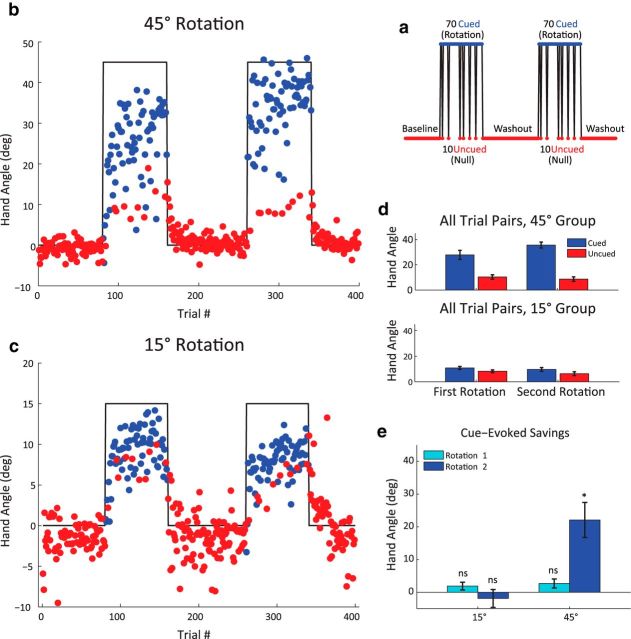Figure 5.
Control of aiming strategy by an arbitrary color cue. a, Interleaved design of Experiment 4 in which the cursor changed color on rotation trials (depicted in blue). The cursor remained white on no-rotation trials (depicted in red). b, c, Heading angle for groups exposed to 45° and 15° rotations, respectively. Note the difference in the scale of the y-axis. d, Blue bars represent mean of the cued trials, limited to those that immediately preceded an uncued trial. Red bars represent mean of uncued trials. e, Baseline subtracted hand angle on the first trial for Rotation 1 and Rotation 2. The color cue prompted the use of an aiming strategy for the 45° group, even before the participants had experienced errors caused by the perturbation in Rotation 2. Data are mean ± SEM. *Significant difference. ns, Not significant.

